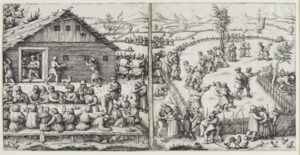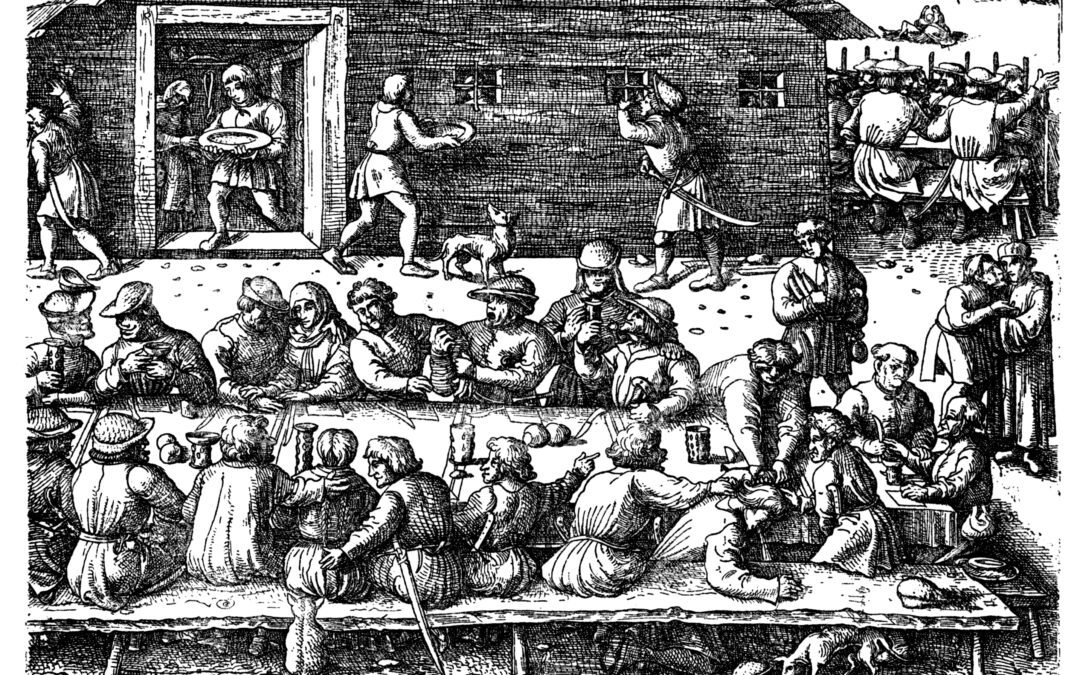Hopfer’s Peasants at Table at a Rustic Festival [or Tafelnde Bauern beim dorflichen Fest or Peasants at Table at a Rustic Festival, also called a kermesse, may celebrate a patron saint, though in this instance, it seems secular, most likely, a celebration of spring.
At the end of winter, Hopfer illustrates the shift in decorum as the peasants are released from the winter cold, darkness, and food scarcity. The release of pent-up anxieties is replaced with a frenzy of disorderly behavior, drinking, and gourmandizing. There is a public display of touching, sexuality, and lust.
The scene is precisely divided by a pole running from top to bottom. On the left, villagers are seated at long tables eating and drinking out of doors in an open space, in front of a village community building that is probably an inn. Food is prepared in the building, and you can see servers entering and leaving. 
There is neither decorum nor tact at the long tables set up for the celebration. All seem intent on devouring what is served. The men and the women behave without embarrassment. A man affectionately pats the arse of the woman seated next to him. Many embrace, grope and grab. Everyone seems drunk.
On the right side, in a small open field, two horn players serenade the villagers, some of whom dance. As with those at the tables, many are playing touchy-feely. Sexual preferences are exposed; men and women grope one another, and so do men. Front and center, where it can’t n be missed by the viewer, a man retches; less obvious, behind a picket fence, a man bares his ass and defecates.
Featured Image: Daniel Hopfer. Peasants at Table at a Rustic Festival [Tafelnde Bauern beim dorflichen Fest] (1535c.). The Minneapolis Institute of Arts, Minneapolis, MN. Similar scenes of a village festival or kermesse are common. Among the most famous are kermesse scenes by Pieter Brueghel the Younger (1628) and Peter Paul Rubens (1635). For a modern kermesse, see

